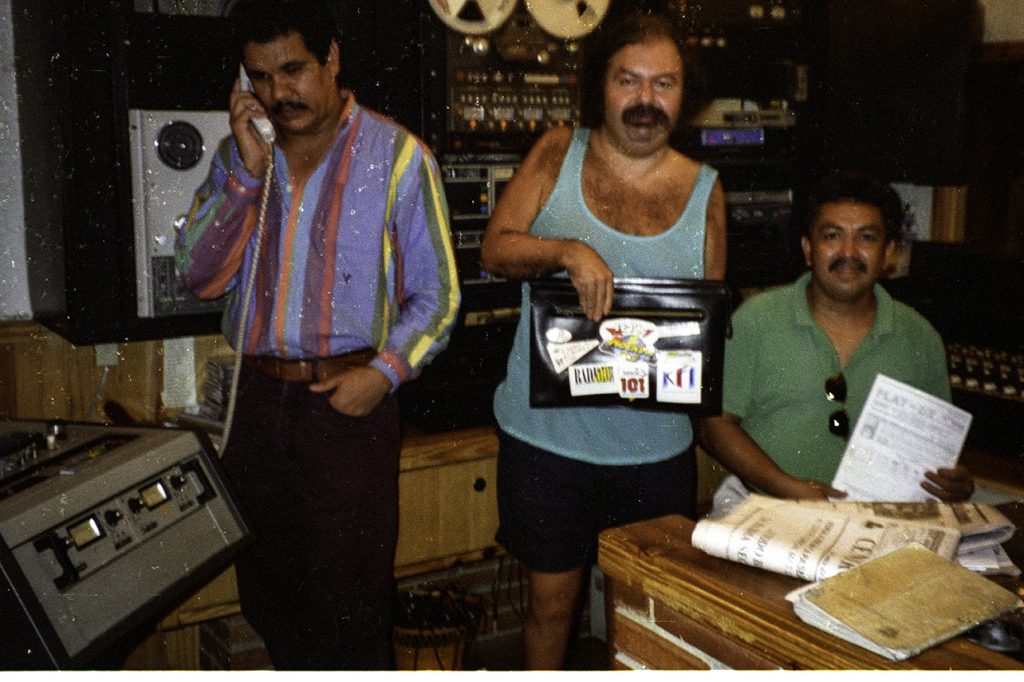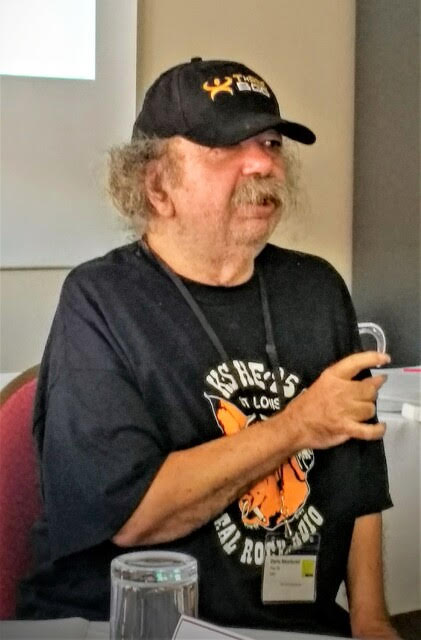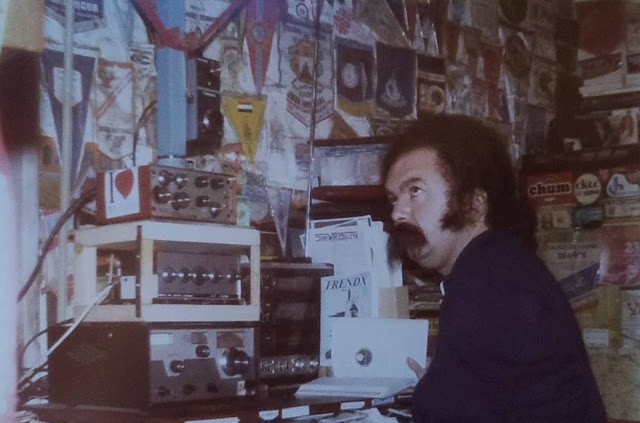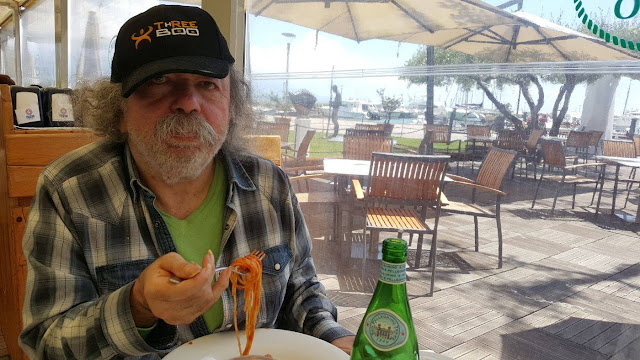Radio is also a passion, for those who make it and listen to it. Among those who ‘turn the knobs’, Dario Monferini has left an indelible mark: in almost fifty years he has listened to and visited thousands of radio stations

Credits
His unmistakable look sticks in the memory of thousands of radio operators who welcome him into the studios. He is well-informed about all radio stations, not just the ones he listens to. He visits as many as possible to get to know them better, to ask for information and, above all, for gadgets. He dreams of a museum that tells the history of stations all over the world. To do so, he collects everything that bears witness to the radio epic: newspaper cuttings, specialised magazines, books, stamps, coins and phone cards with station logos, programme schedules, and photographs. In the pre-internet era, he created a network of hundreds of correspondents scattered all over the world, who, like him, hunt for material and exchange it. Swirling.
The character

Credits
The picture above shows him on an overseas trip. It’s the nineties: Dario poses in front of the trademark and slogan of a Venezuelan Circuito Nacional Belfort, closed in 2009 when President Ugo Chávez withdrew the concession from radio stations opposing his regime. The shot is by Marzio Vizzoni, a passionate photographer who follows him on the South American stage. Almost everyone welcomes this curious Italian who knows frequencies and radio names inside out, even though he lives on the other side of the ocean: in the analogue era, he has the memory of a computer. In his hand he holds PlayDx, a fanzine edited every Sunday morning with a typewriter. Uninterruptedly until 2012, when the tapes become unavailable. He published more than 1500 issues before migrating to digital, helped by friends.
Fifty years of travel

Credits
In almost fifty years, Monferini travelled the length and breadth of Europe and the American continent. He visits thousands of stations. Some interview him live, and air the recording of the programme he received in Italy. Friendly, he dispenses vitriolic jokes in various languages. He learns them as an autodidact, to decipher the details of programmes that often arrive with a signal at the limit of comprehensibility. He listens to everything, on short, medium and long waves. He approached radio listening at the end of the 1960s: passion, intelligence and willpower immediately made him excel. He became an institution and actively participated in international conventions of enthusiasts’ clubs, representing Italian radio listening.
The trophy room

Credits
He becomes a leader. For him, listening is also redemption. Polio has left heavy marks: he wears orthopaedic shoes and has to get help from friends to open drinks cans. But his will makes up for the gaps and drives him to wear out the soles of his shoes by travelling the world far and wide. He throws himself into his hobby and renounces starting a family. He marries radio. In just a few years, he has hit the ground running and is a cut above other enthusiasts: he writes to every radio station he can tune into. In the first four years, he gets 1,200 replies. A record. He listens to practically everything that reaches Italian latitudes (disadvantaged by propagation, which gives northern Europeans exceptional openings, thanks to the earth’s magnetism and the many hours of darkness). He compensates for the lack of propagation with commitment.
From North American medium wave stations to FM

Credits
He runs on the bands every night until the wee hours to receive South American stations. And when the cone has no more secrets, he switches to North American medium-wave stations. He wakes up between four and six o’clock to take advantage of the cone of shadow that precedes the rising of the sun and that favours reception. He identifies favourable days by phoning the observatory in Boulder, Colorado, every day, which broadcasts a recorded message with the solar activity values. These were the roaring years of radio on short and medium waves. And, when the liberalisation of the Italian airwaves began in 1975 and frequency modulation became populated with broadcasters, he also devoted himself to FM. The wave of freedom spreads over the band and crosses Europe. It sweeps away the dreariness of state radios and brings a generation of youngsters onto the airwaves, some of whom are still in the saddle today, almost fifty years later, but just as passionate as they were then. Thousands of broadcasters were born: an opportunity not to be missed to gather material to document them.
An immense collection… dispersed

Credits
To collect a memento on each radio he makes whirlwind exchanges with enthusiasts all over the world. In fifty years he created an immense collection and filled a flat with stacks of boxes reaching up to the ceiling. Unfortunately, the unforgivable decision of the tutelary judge (two years after a heart attack in 2021 and the first stroke) and the insensitivity of the support administrator sent everything to the scrap heap in order to sell the flat and pay for the retirement home. A pity. But if the collectors at the time and the radio editors, all now in their old age, join forces, they can realise that dream they perhaps shared in their hearts. Something that tells their story. It would be an opportunity to reconstruct their memory since the publicity materials collected by enthusiasts are often the only evidence of many of the more than 12,000 Italian radio stations that have been in existence since 1975. To organise the materials, valorise them and organise travelling exhibitions instead of letting them get mouldy in some cellar. Or have them end up in a landfill. Dario left us on 17 October 2022 before dawn, in the health facility where he had been hospitalised for months in Milan.
Written by Fabrizio Carnevalini
